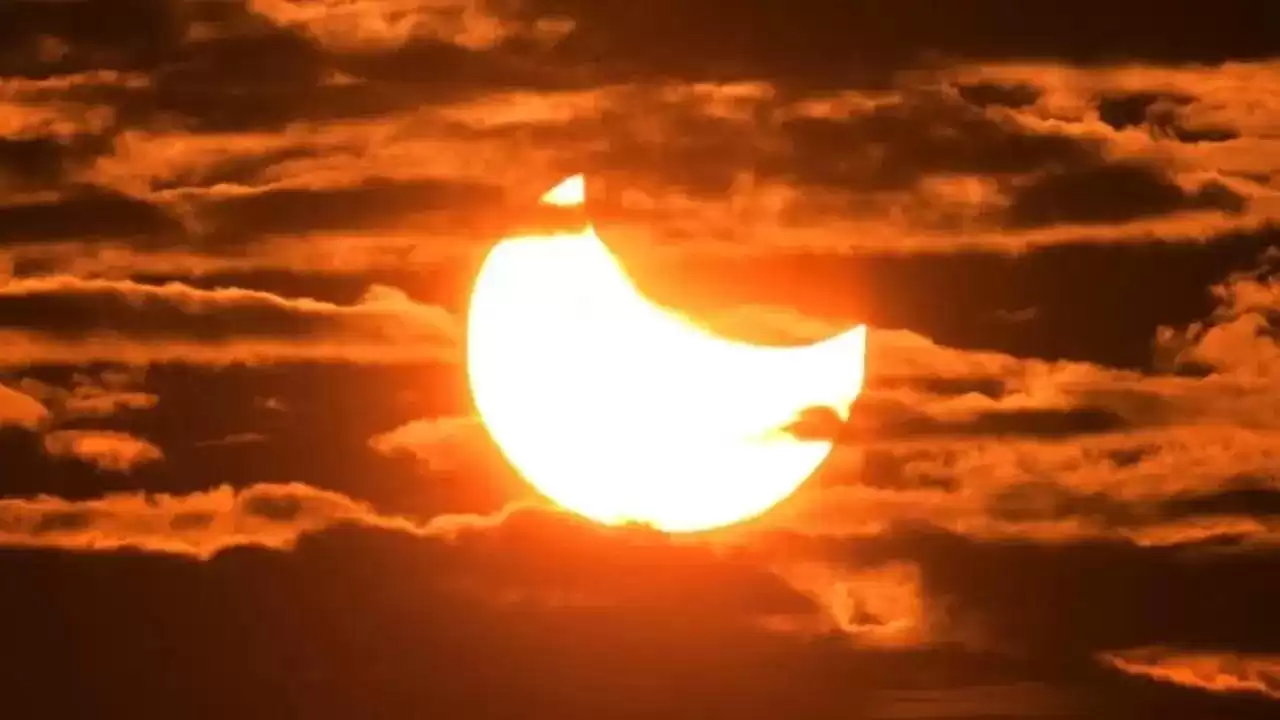Solar Eclipse 2023: Types of Solar Eclipses
"Watch the 'ring of fire' solar eclipse in 2023 on NASA's YouTube channel. Remember to protect your eyes!"
A solar eclipse is a remarkable phenomenon that occurs when the moon aligns perfectly between the Earth and the Sun, causing the Sun's light to be temporarily blocked and casting a shadow on a portion of the Earth's surface. This extraordinary event can only take place during a new moon when the Sun, Moon, and Earth are in a straight line.
There are different types of solar eclipses, each with its own unique characteristics. A total solar eclipse happens when the Moon completely covers the Sun, allowing the Sun's outer atmosphere, known as the solar corona, to become visible. This creates a moment of darkness during the day within the eclipse's path, also known as the "path of totality."
On the other hand, a partial solar eclipse occurs when the Moon only partially covers the Sun, resulting in a partial shadow on the Earth and a partial darkening of the sky. In this case, the Sun is not completely blocked by the Moon.
Another type of solar eclipse is the annular solar eclipse. During an annular solar eclipse, the Moon covers the central part of the Sun, leaving a ring or "annulus" of the Sun's outer edges visible. This occurs because the Moon is farther from Earth in its elliptical orbit, making it appear slightly smaller in the sky.
Solar eclipses are captivating natural phenomena that attract the attention of astronomers and eclipse enthusiasts. It is important to observe them with proper eye protection to avoid any damage to the eyes. The path of totality during a total solar eclipse is particularly sought-after as it offers a unique opportunity to witness this awe-inspiring celestial event.
In October 2023, there will be a "ring of fire" solar eclipse, but unfortunately, it will not be visible in India. However, people in India and around the world can still experience the eclipse through the official NASA broadcast on their YouTube channel, which will start streaming at 4:30 pm on October 14, 2023.
When it comes to safety precautions, it is crucial to remember that during an annular solar eclipse, the Sun is never completely blocked by the Moon. Therefore, it is never safe to directly gaze at the Sun without appropriate eye protection. Eclipse glasses, specifically designed for this purpose, are thousands of times darker than regular glasses and provide the necessary protection.
Furthermore, it is essential to avoid looking at the Sun through cameras, telescopes, binoculars, or any other optical devices during the eclipse. Doing so can not only damage the filter but also pose a significant risk of eye injury.
In conclusion, solar eclipses are remarkable celestial events that occur when the moon aligns perfectly between the Earth and the Sun. They offer a unique opportunity to witness the beauty of the solar corona and experience a moment of darkness during the day. However, it is crucial to prioritize safety and observe solar eclipses with proper eye protection to avoid any harm to our eyes.












Comments on Solar Eclipse 2023: Types of Solar Eclipses